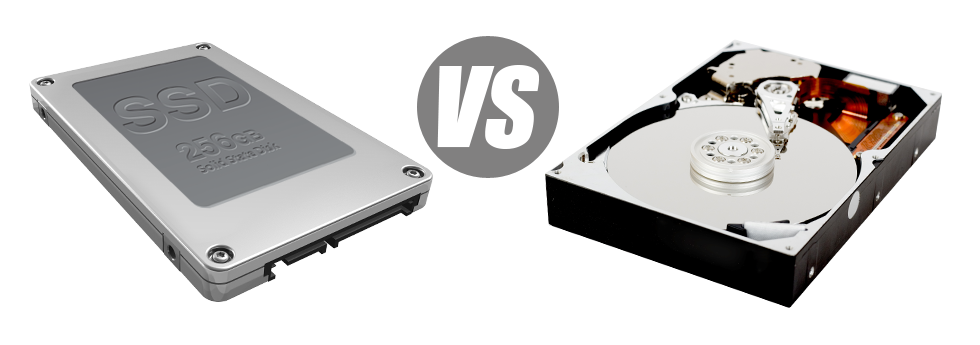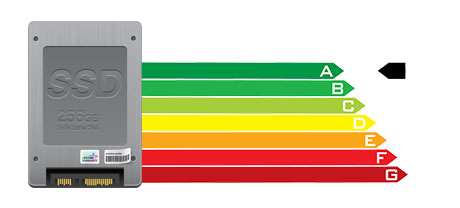Presently, all brand new computer systems include SSD drives as opposed to HDD drives. You’ll notice superlatives to them everywhere in the specialized press – they are a lot faster and operate far better and they are the future of home pc and laptop computer generation.
On the other hand, how can SSDs perform within the website hosting community? Could they be dependable enough to replace the verified HDDs? At Site Domains, we are going to assist you better see the differences among an SSD and an HDD and determine which one best fits you needs.
1. Access Time
After the release of SSD drives, file access rates have gone through the roof. As a result of brand new electronic interfaces found in SSD drives, the regular data file access time has been reduced into a all–time low of 0.1millisecond.
HDD drives count on rotating disks for data storage uses. Every time a file is being utilized, you need to await the right disk to get to the right place for the laser to view the data file in question. This results in a standard access speed of 5 to 8 milliseconds.
2. Random I/O Performance
The random I/O performance is critical for the efficiency of any data storage device. We have carried out thorough exams and have determined that an SSD can manage at the least 6000 IO’s per second.
During the very same trials, the HDD drives demonstrated to be much slower, with only 400 IO operations managed per second. Although this feels like a significant number, when you have an overloaded web server that serves lots of well known websites, a slow hard disk may result in slow–loading sites.
3. Reliability
The absence of moving components and spinning disks inside SSD drives, as well as the recent improvements in electrical interface technology have ended in a significantly less risky data file storage device, with a normal failing rate of 0.5%.
As we have already observed, HDD drives rely upon rotating disks. And anything that takes advantage of a number of moving components for prolonged periods of time is more prone to failure.
HDD drives’ common rate of failing ranges between 2% and 5%.
4. Energy Conservation
SSDs do not have moving components and require almost no cooling power. In addition, they require a small amount of energy to perform – tests have shown they can be powered by a standard AA battery.
In general, SSDs use up between 2 and 5 watts.
From the second they have been made, HDDs have always been very electric power–greedy devices. When you’ve got a web server with numerous HDD drives, this tends to increase the month–to–month utility bill.
Normally, HDDs use up somewhere between 6 and 15 watts.
5. CPU Power
The swifter the file access rate is, the swifter the data file queries can be processed. It means that the CPU do not need to hold allocations waiting around for the SSD to respond back.
The regular I/O delay for SSD drives is actually 1%.
When compared to SSDs, HDDs enable slower data access rates. The CPU will be required to lose time waiting for the HDD to come back the required data, reserving its allocations for the time being.
The common I/O wait for HDD drives is around 7%.
6.Input/Output Request Times
The majority of our new web servers now use merely SSD drives. All of our lab tests have demonstrated that utilizing an SSD, the average service time for an I/O request while building a backup continues to be below 20 ms.
In comparison to SSD drives, HDDs deliver considerably slower service rates for I/O requests. Throughout a web server backup, the average service time for an I/O call ranges between 400 and 500 ms.
7. Backup Rates
You’re able to feel the real–world advantages of using SSD drives each day. By way of example, on a hosting server designed with SSD drives, a complete backup will take just 6 hours.
We employed HDDs mainly for a couple of years and we have excellent familiarity with precisely how an HDD functions. Creating a backup for a web server designed with HDD drives will take about 20 to 24 hours.
With Site Domains, you will get SSD–powered website hosting services at reasonable prices. The cloud website hosting plans and our Linux VPS can include SSD drives automatically. Apply for an hosting account here and see how your sites can become better at once.
Hepsia
- Live Demo
Service guarantees
- Join us now. There won’t be configuration service fees and you’ll have full root access to your server. 99.9% network uptime is guaranteed.
Compare our prices
- Examine the tools and characteristics offered by our Virtual Private Servers. You could begin with a smaller VPS configuration and move up with a mouse click as your demands increase.
- Compare our hosting plans
Contact Us
- You can easily make contact with us around the clock by email or by making use of our extremely–fast ticketing system. Our company offers a 1–hour reply time guarantee.















